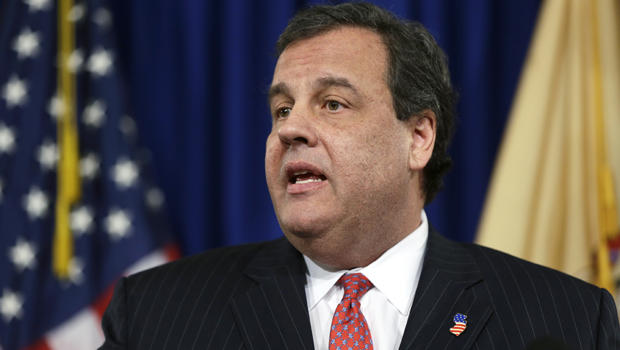Emails show Christie officials trying to control fallout from bridge gridlock
TRENTON, N.J. - Officials squabbled over media leaks and scrambled to control the publicity damage in the days after lane closings near the George Washington Bridge caused huge traffic jams that now appear to have been politically orchestrated by members of Gov. Chris Christie's administration, documents released Friday show.
In the documents, officials appointed by Christie seemed more concerned about the political fallout than the effects of the gridlock in the town of Fort Lee during four mornings in September.
The thousands of pages were released by a New Jersey legislative committee investigating the scandal that could haunt Christie's expected run for president in 2016. The documents mostly involve the Port Authority of New York and New Jersey, the agency that runs the bridge.
Lawmakers are looking into allegations that Christie loyalists deliberately created the tie-ups to punish the Democratic mayor of Fort Lee for not endorsing Christie for re-election.
The emails show that Port Authority officials did collect traffic data during the closures, but what is not clear is whether it was done as part of an actual traffic study, one reason given for the closures.
The communications also show attempts to contain the fallout, which included numerous inquiries from reporters.The attempts to manage that fallout were made not just by Christie allies at the Port Authority but also the governor's spokesman, Michael Drewniak. One of his responses clearly showed distain, when at one point he referred to a reporter as an "expletive mutt." His public response to the reporter however tried to distance the governor from the closures.
The documents show that the traffic mess created tension between New York and New Jersey appointees at the Port Authority, with the New York side angrily countermanding the lane closings.
In the correspondence, Port Authority chairman David Samson, a Christie appointee, suggested that the authority's executive director, Patrick Foye, who was appointed by New York Gov. Andrew Cuomo, had leaked to a reporter an internal memo ordering an end to the lane closings.
Samson called that possibility "very unfortunate for NY/NJ
relations."
On Thursday, Christie moved to contain the damage from the scandal, firing his deputy chief of staff, cutting ties to one of his chief political advisers and apologizing for the traffic jams. Two Christie appointees at the Port Authority resigned last month as the scandal unfolded.
Christie has denied any involvement in the lane closings, and the two batches of documents released on Wednesday and Friday do not implicate him.
The latest documents contain several emails from Port Authority
media relations staff to higher-ups reporting on calls from reporters with
questions about the closings. The agency did not respond to those calls.
Bill Baroni, the Christie-appointed deputy director who has since resigned, forwarded a copy of the angry email to Christie's scheduling secretary.
Later that morning, Baroni emailed Foye: "I am on my way to
office to discuss. There can be no public discourse."
Baroni later authorized a statement for reporters explaining that the closings were part of a traffic study.
In recent weeks, there have been questions about the whether the closings were part of a legitimate study.
Christie himself said on Thursday: "I don't know whether this was a traffic study that then morphed into a political vendetta or a political vendetta that morphed into a traffic study."
The newly released documents show that there was, in fact, a traffic study that was done, or at least a preliminary one. It was six pages and dated Sept. 12, the day before the lanes were reopened.
The documents include study findings that Baroni gave to lawmakers in a hearing last year: When the lanes were closed, the main bridge traffic moved a bit faster, but local traffic had major delays.
How to deal with the fallout became an issue.
In an Oct. 9 email exchange under the subject "morning clips," Philippe Danielides, a senior adviser at the Port Authority, asked David Wildstein, a Christie appointee on the Port Authority who has since resigned, "Has any thought been given to writing an op-ed or providing a statement about the GWB study? Or is the plan just to hunker down and grit our way through it?"
"Yes and yes," Wildstein replied.
The documents also showed confusion from one Port Authority police official about the closings as they were starting.
"The undersigned inquired if this is a permanent plan or temporary," Capt. Darcy Licorish wrote in an email recounting her meeting with the bridge manager. "The manager could not supply an answer to that or other questions. Inquiry was also made as to the notifications of the township. No answers could be supplied."
New Jersey Democratic Assemblyman John Wisniewski is heading the state legislative committee's investigation into the lane closures. He plans to subpoena Bridget Kelly, Christie's former deputy chief of staff who wrote the email saying "Time for some traffic problems in Fort Lee."
